Using antifreeze/coolant is important because it keeps your car in good working condition. But you may wonder where do you pour it in, and where does it go afterward? We did some research to answer these questions for you.
You may need to add coolant into the reservoir or expansion tank of a car. Or, add coolant directly into the radiator of an older vehicle that lacks a reservoir or expansion tank. Add new coolant to the reservoir when levels or low, or to the reservoir and radiator after flushing the cooling system.
Coolant solution circulates to your engine, heater core, and radiator to regulate the temperature of your engine, and sometimes the cabin. If you need to top up or replace your car's antifreeze, or want to learn more about your car's cooling system, read on. We'll help you better understand these points.
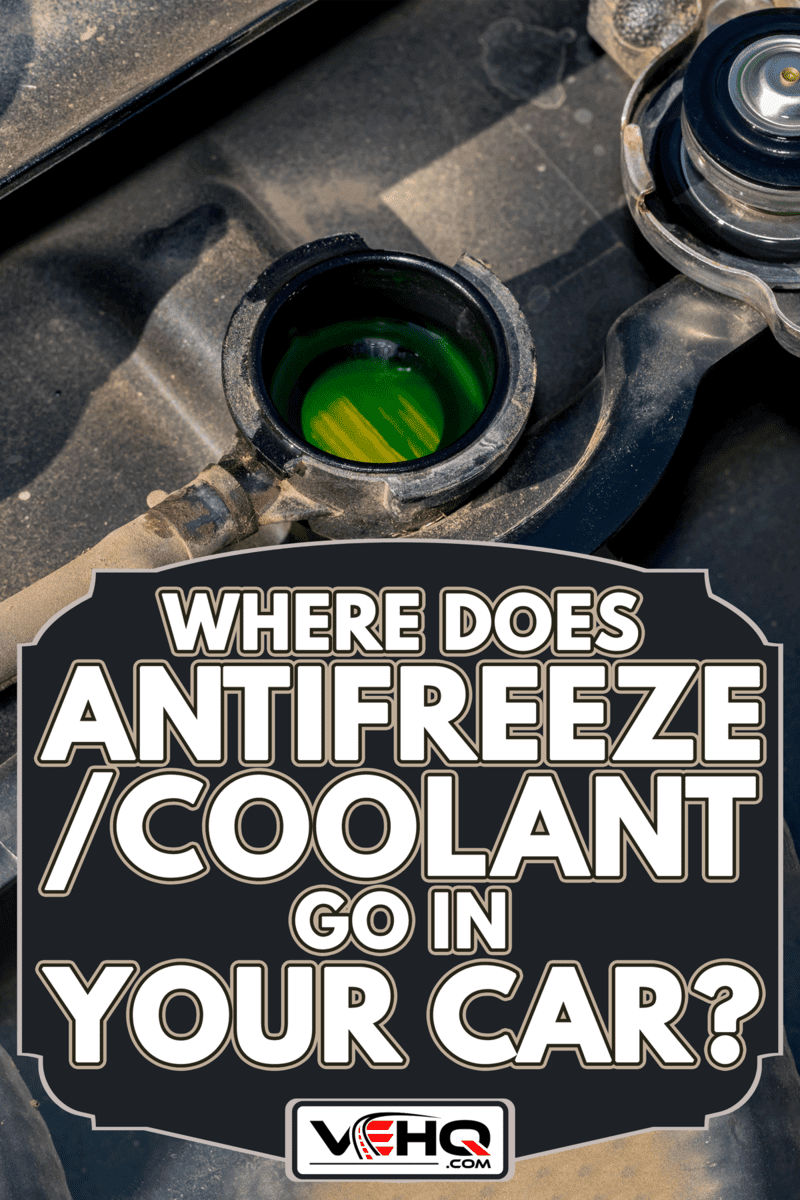
Where Do I Pour My Antifreeze/Coolant?
Before we go any further, let's get one terminology issue out of the way. Because modern antifreeze solutions prevent freezing in cold temperatures and also cool down the engine, you can say that coolants and antifreeze products are the same thing.
Check Your Coolant Level
If you wish to check your coolant level safely and accurately, you will need to park the car on level ground, turn the engine off, and wait until the engine completely cools down.
Once the car has completely cooled down, here are the next steps:
- Open the hood or bonnet of your car and ensure that it is locked in the open position.
- Locate the reservoir/expansion tank. It is usually a white, semi-transparent plastic container beside the radiator with the word 'COOLANT' written on its cap.
- If the reservoir's exterior is not too dirty, you should be able to see the coolant level from the outside. In a cooled-down engine, the coolant level should be between the minimum and maximum line on the reservoir.
Below is a sample image of a reservoir.
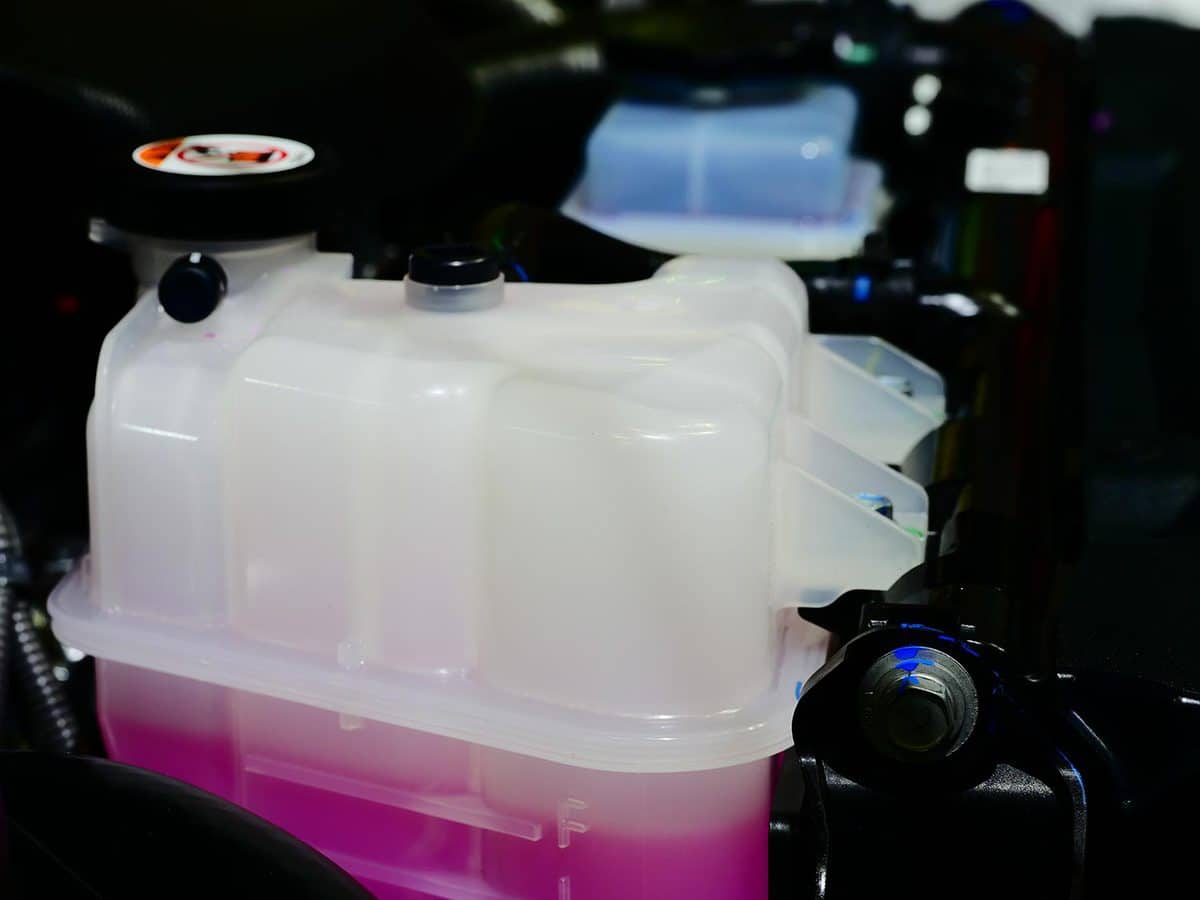
If the coolant level is:
- Below or close to the minimum line - add more coolant if you wish.
- Above the maximum line - you may need to pour out or drain some of the excess coolant liquid.
- Empty - you really need to top up your reservoir and possibly your radiator. You may also need to check your cooling system for leaks.
Topping Up Your Coolant
After confirming that you only need a top-up, use the same type of coolant as the one inside your cooling system.
- Slowly loosen and remove the reservoir cap to let out any remaining pressure.
- Pour your additional coolant slowly into the reservoir until it reaches the maximum line.
- Close the reservoir cap securely.
- Start the engine and let it run for about 5 to 15 minutes, enough for the engine to reach normal operating temperature. Monitor the coolant level in the reservoir.
The coolant level may exceed the maximum line as the liquid expands due to heat. This is normal as long as the coolant level does not reach the top of the reservoir.
The coolant level may also drop if the radiator did not have enough coolant at the start. This is normal as well, as long as the coolant level does not drop below the minimum line on the reservoir.
Flushing And Replacing Your Coolant
If your coolant is due for replacement, it is always best to flush the old coolant liquid out of the system before pouring in a new batch.
Old coolant in your system has probably degraded to where it cannot offer protection or lubrication to your cooling system. Instead, it probably contains rust and other sediments that can damage your car.
If you want to top up but are unsure if your new coolant is the same type as the one already in your system, then it is better to flush. Mixing different coolants may damage your cooling system and your engine.
Want to see how it's done? Check out this video about coolant flushing and replacement. We've also covered the necessary steps to take in this post.
Flushing Your Coolant
Here's how to flush and replace your coolant:
- Park the car on level ground, turn the engine off, and wait until the engine completely cools down. Make sure you are outdoors or in a sufficiently ventilated area as you will need to start your engine later.
- Turn the vehicle's ignition to the 'ON' position. But do not start the car. Doing this allows the air conditioning system to work.
- Turn on your cabin heater to ensure that the coolant tubes leading to and from the heater core are open.
- Open the hood or bonnet of your car and locate the radiator. Check once again, if the radiator is already cool to the touch.
- Remove the radiator cap slowly. There might still be some leftover pressure inside, so be careful. Coolants are toxic chemicals.
- Place an appropriately sized draining pan or container underneath the radiator drain plug. You may need to check your car's coolant capacity in your owner's manual to know how big your draining pan needs to be.
- Loosen the radiator's drain plug carefully and let the old coolant flow out into the draining pan.
- Once the radiator is drained completely, move the draining pan underneath the engine's drain bolt.
- Remove the engine's drain bolt and let the old coolant flow out into the draining pan.
- Once the engine is completely drained of coolant, replace and tighten both the engine's drain bolt and the radiator's drain plug.
- Remove the reservoir tank and pour out the coolant inside. Make sure the reservoir is clean inside before replacing it.
Check out this 16-liter coolant draining pan on Amazon
Replacing Your Coolant
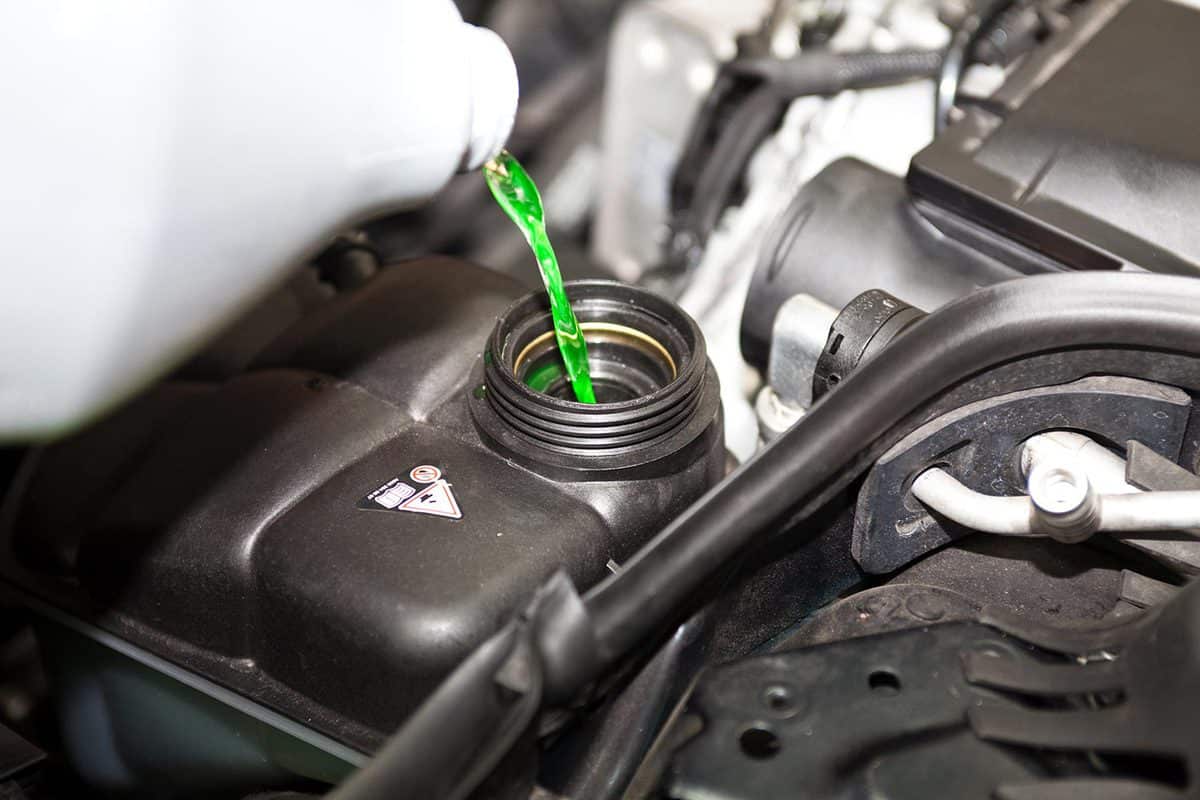
Once you've drained the old coolant from your reservoir, radiator, and engine block, you are now ready to pour in new coolant into your cooling system.
- Refill your reservoir with new properly diluted coolant concentrate or pre-diluted coolant solution. Make sure not to fill beyond the 'MAXIMUM' line before closing the reservoir.
- Refill your radiator slowly with your new coolant until the liquid reaches the base of the radiator's filler neck.
- Without replacing the radiator cap, start your engine and let it run for about 15 to 30 minutes. Doing this will circulate the new coolant and also remove any air pockets inside the cooling system.
- The coolant level will recede as it circulates to the 'water jacket' and the heater core. Also, coolant may also spill out of the open radiator. Refill it as needed, and check for leaks as well.
- Turn off the engine and let the radiator cool down a little before replacing the radiator cap. Use gloves, if necessary.
- Start the engine once again and check for leaks.
Check out this Zerex Antifreeze on Amazon
If you don't see any leaks, you're done flushing and replacing your coolant. Congratulations!
Where Does The Coolant Go After I Pour It?
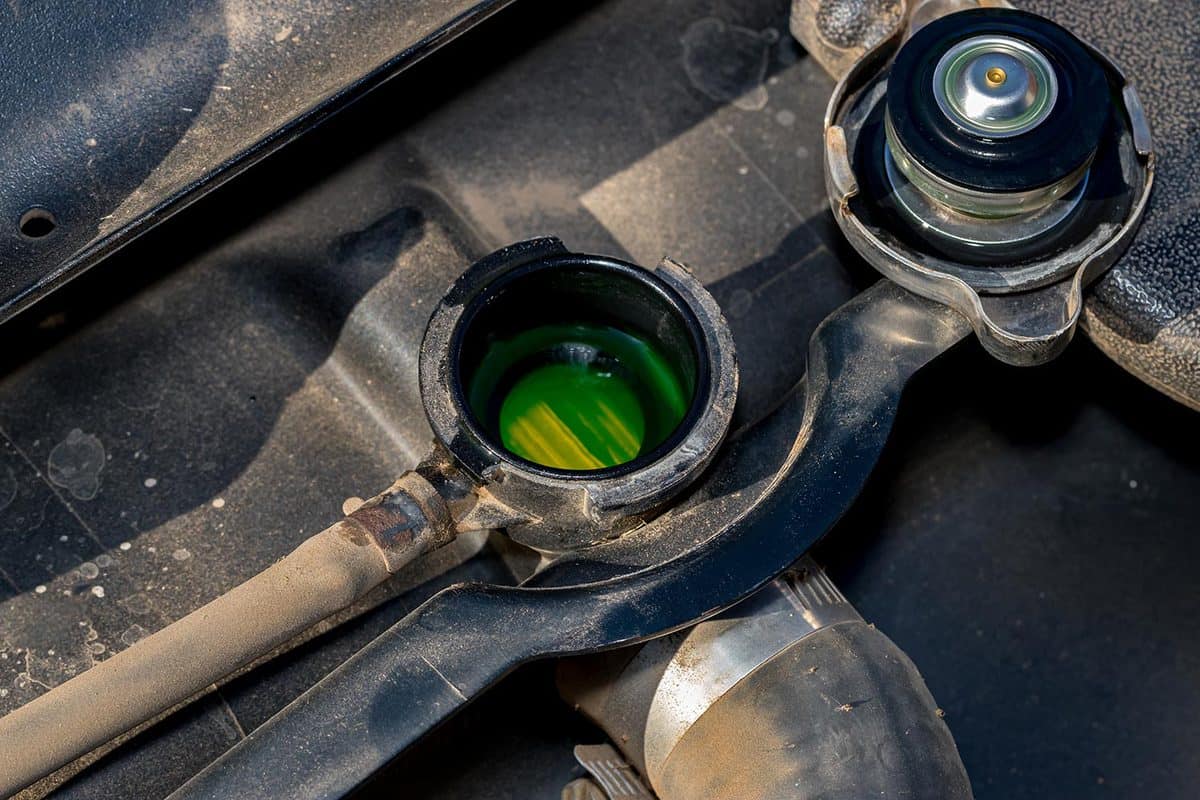
If your car's cooling system is fully sealed, then your antifreeze should circulate inside the cooling system.
When the engine is at rest, the coolant solution stays stored inside the radiator, reservoir, heater core, hoses and tubes, and the engine's 'water jacket.' The water jacket is the collective term for the coolant passages and galleries inside the engine block.
Where Does The Coolant Go When I Start The Engine?
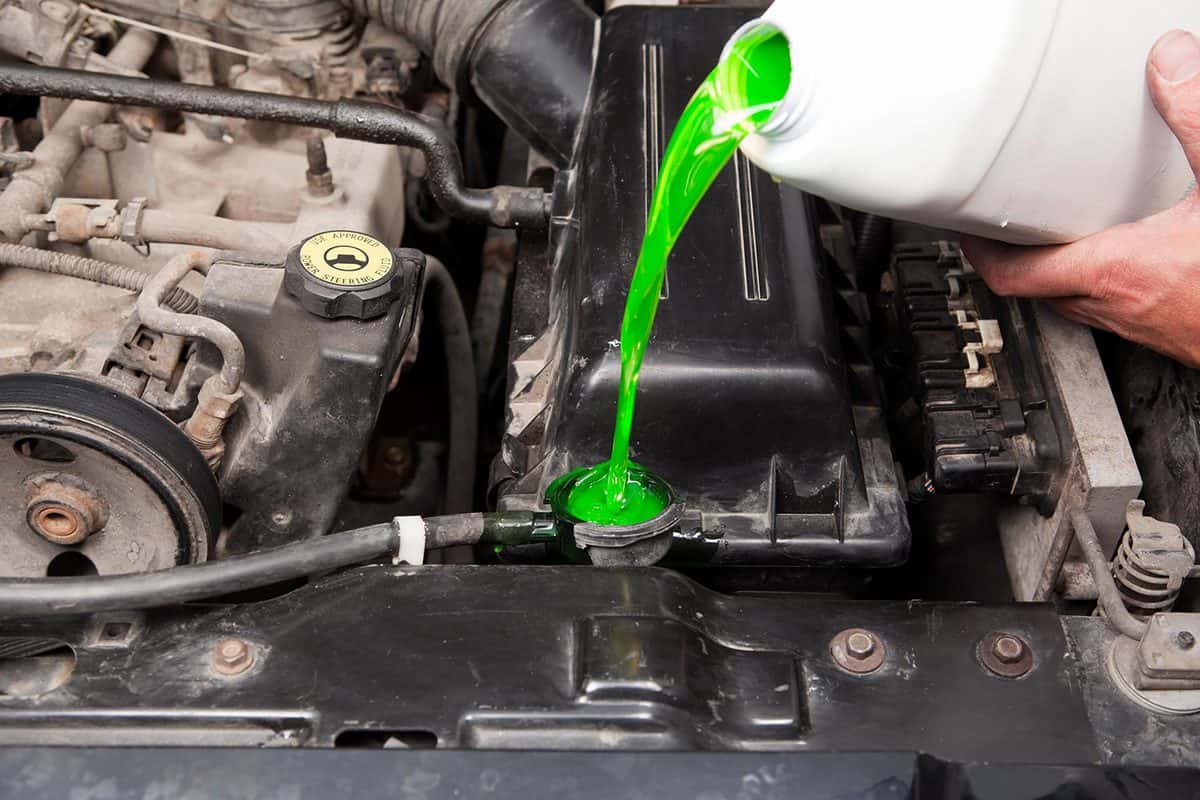
When an engine is running, the water pump forces the coolant to circulate in the engine. Since water pumps are mostly belt-driven, the coolant circulates faster as the engine RPM goes higher.
The coolant in the water jacket absorbs the heat produced by the engine's combustion chambers. The heated coolant flows through hoses and into the upper part of the radiator. The radiator's tubes and fins, helped by the radiator cooling fans, dissipate the coolant's heat into the air.
If you turn on your car's cabin heater, especially during winter, some of the heated coolant flows through the heater core. The heater core is like a small radiator. It can dissipate some of the heat into the car's cabin using a fan and/or an outside air vent.
After passing through the heater core, the small portion of the coolant liquid re-enters the cooling system's circuit and travels to the radiator. Once the coolant liquid passes down through the radiator, it becomes cool enough for another cycle.
What Coolant Should I Use For My Car?
Depending on the brand and model year of your car, your car's manufacturer may recommend IAT, OAT, HOAT, or Lobrid coolants.
Inorganic Acid Technology (IAT) Coolants
IAT coolants have inorganic anti-corrosion additives that are more suitable for older, iron-based engine blocks.
Organic Acid Technology (OAT) Coolants
OAT coolants have organic additives that offer less protection but longer coolant life. These coolants are better suited for newer engines with aluminum blocks.
Hybrid Organic Acid Technology (HOAT) Coolants
These hybrid coolants have both organic and inorganic additives that offer the best benefits of both IAT and OAT coolants.
Lobrid Coolants
As a sub-category of HOAT coolants, 'Lobrid' coolants use more organic than inorganic additives. Two examples of these coolants are:
- P-OAT coolants - Phosphated Organic Acid Technology
- Si-OAT coolants - Silicated Organic Acid Technology
The Wrap Up
Engine coolant goes into your reservoir and your radiator. From there, the solution circulates into the engine's water jacket to absorb heat, then back to the radiator to release the heat.
We hope we could help you understand more about your car's antifreeze/coolant.
For more interesting articles about coolants and other automotive topics, check these links out:
What Color Coolant Does Ford Use


